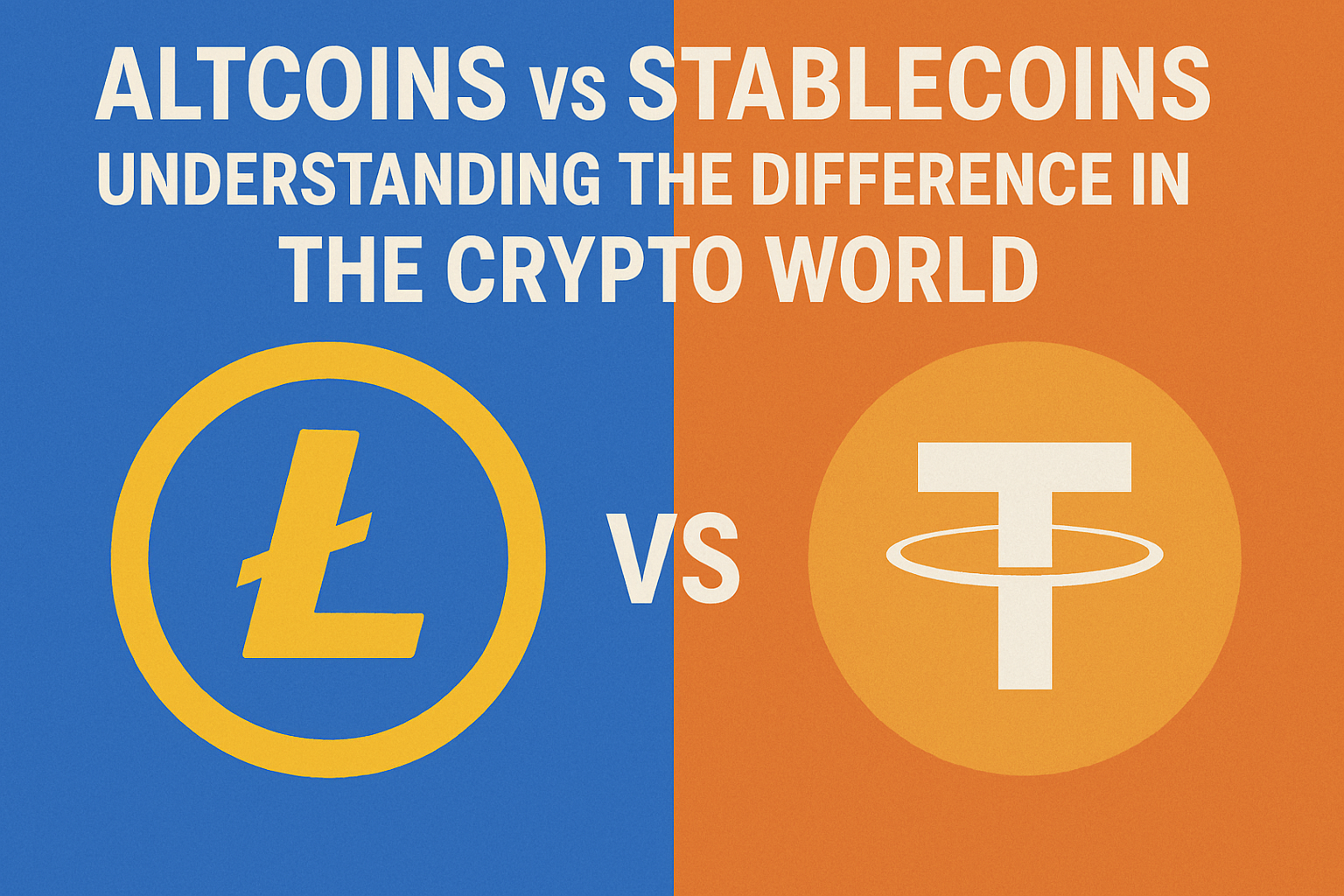Altcoins vs Stablecoins: Understanding the Difference in the Crypto World

The world of cryptocurrency has expanded far beyond Bitcoin. As digital assets evolve, two types of coins have taken center stage: altcoins and stablecoins. Both play significant roles in the growing blockchain ecosystem, but they serve very different purposes. To make informed decisions in the crypto market, it is essential to understand the nuances of Altcoins vs Stablecoins.
What Are Altcoins?
Altcoins, short for “alternative coins,” refer to all cryptocurrencies that are not Bitcoin. When Bitcoin first launched in 2009, it set the foundation for digital currency, but developers soon began creating alternatives with different features, goals, and technologies. Ethereum, Litecoin, Cardano, Solana, and Ripple are some well-known altcoins, each offering something unique.
The primary characteristic of altcoins is their volatility. Prices of these digital assets can swing dramatically, sometimes gaining or losing double digits in a single day. This volatility often attracts investors and traders who hope to profit from price fluctuations. At the same time, it introduces significant risk.
Beyond speculation, many altcoins aim to solve real-world problems. Ethereum, for example, powers decentralized applications and smart contracts, while Ripple focuses on faster and cheaper cross-border payments. Some projects are experimental, while others build thriving ecosystems. This makes altcoins a diverse group, ranging from serious innovations to risky ventures with uncertain futures.
What Are Stablecoins?
Stablecoins, on the other hand, are designed to minimize volatility. Unlike altcoins that fluctuate heavily, stablecoins are pegged to stable assets such as the U.S. dollar, euro, or even commodities like gold. For example, Tether (USDT), USD Coin (USDC), and DAI are popular stablecoins, each maintaining its value close to $1.
The stability of these coins makes them particularly useful for transactions, remittances, and savings within the crypto world. Many traders use stablecoins as a safe haven to park funds during volatile market conditions. Instead of converting digital assets back into fiat currency, they can switch to stablecoins quickly, reducing fees and delays.
Stablecoins also serve as a bridge between traditional finance and crypto markets. They allow individuals and businesses to transact digitally while avoiding the unpredictable swings common with altcoins. In essence, stablecoins focus on utility and reliability, while altcoins often emphasize growth potential and innovation.
Altcoins vs Stablecoins: The Key Differences
When comparing Altcoins vs Stablecoins, it becomes clear that each type of cryptocurrency serves distinct roles.
-
Volatility: Altcoins are highly volatile, with prices driven by speculation, innovation, or market hype. Stablecoins remain consistent, designed to stay close to their pegged value.
-
Purpose: Altcoins often aim to improve blockchain technology or create decentralized solutions. Stablecoins focus on being a reliable medium of exchange.
-
Investment Profile: Investors look to altcoins for potential high returns, but they carry higher risks. Stablecoins are not meant for growth but for preserving value and providing liquidity.
-
Adoption: Altcoins like Ethereum have fueled decentralized finance (DeFi), NFTs, and other innovations. Stablecoins are widely used in payments, cross-border transfers, and trading pairs on exchanges.
-
Regulation: Governments and regulators pay close attention to stablecoins due to their direct ties to fiat currencies, while altcoins face scrutiny depending on their use cases and securities laws.
In short, altcoins and stablecoins may coexist in the same market, but their functions couldn’t be more different. One thrives on speculation and innovation, while the other relies on trust and stability.
Which Should You Choose?
The choice between altcoins and stablecoins depends largely on your goals. If you are seeking growth opportunities, altcoins may be worth exploring. They provide exposure to new technologies, innovative platforms, and potential price appreciation. However, they come with substantial risk, requiring research, patience, and careful decision-making.
Stablecoins, meanwhile, are better suited for those who prioritize safety and utility. They are excellent for transferring funds quickly, holding value during uncertain markets, or avoiding the complexity of converting to traditional currencies. For many users, stablecoins act as the backbone of their crypto transactions, while altcoins serve as their investment play.
For long-term strategies, many investors combine both. Stablecoins provide a safety net during market downturns, while altcoins offer the possibility of high returns when chosen wisely. Understanding your risk tolerance is the key factor when deciding how to balance between the two.
Conclusion
The debate of Altcoins vs Stablecoins is not about which is better overall, but rather which is better for your specific needs. Altcoins drive innovation and offer the thrill of potential profits, while stablecoins provide reliability and everyday utility. Together, they shape a more complete and functional cryptocurrency ecosystem.
Whether you are a trader, an investor, or simply exploring digital assets for practical use, recognizing the roles of these two types of coins will help you make smarter choices in the fast-paced world of crypto.
- Art
- Causes
- Crafts
- Dance
- Drinks
- Film
- Fitness
- Food
- Spellen
- Gardening
- Health
- Home
- Literature
- Music
- Networking
- Other
- Party
- Religion
- Shopping
- Sports
- Theater
- Wellness


